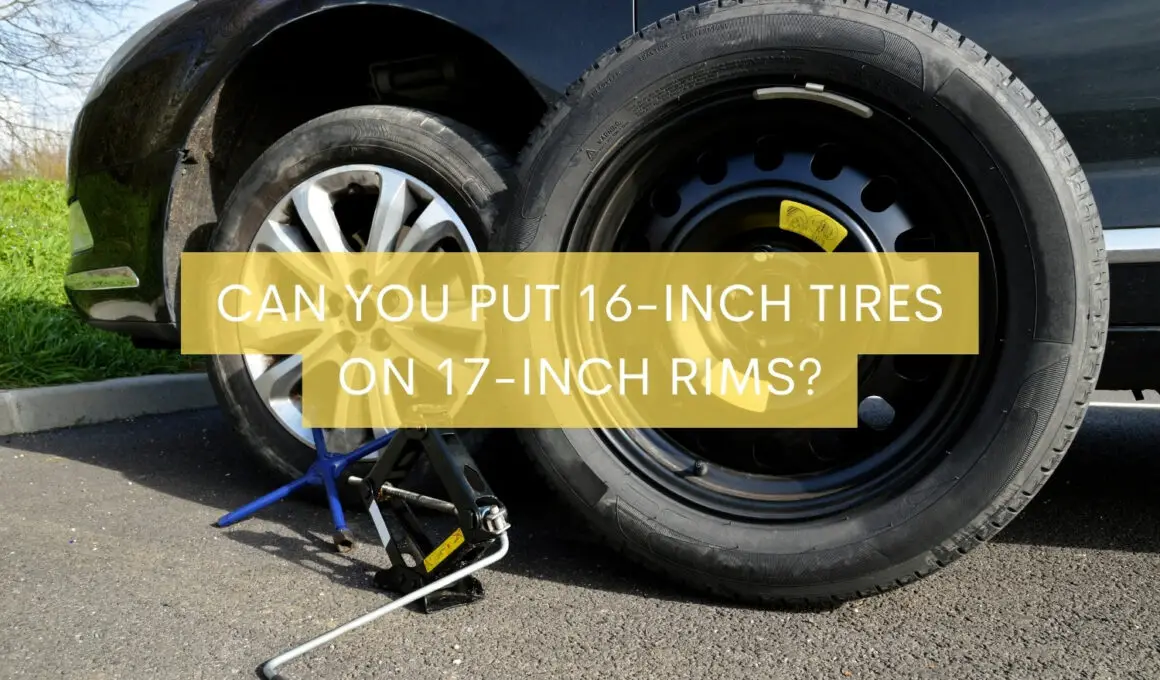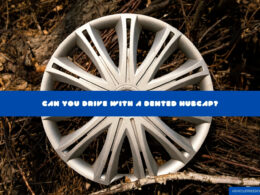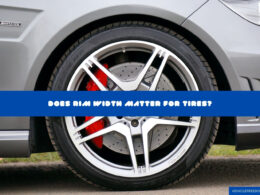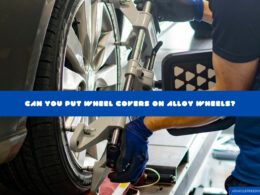In This Article Show
In this guide, I’m going to clarify a common misconception: whether it is possible to put 16-inch tires on 17-inch rims. We will explore the significance of tire and rim sizes, their compatibility, and the potential implications of mismatched sizes.
Please note that throughout this article, I will share my professional insights as a seasoned mechanic and writer, drawing on my extensive 15-year experience.
However, it is essential to consult a trusted tire professional or mechanic for personalized advice regarding your specific vehicle and tire requirements.
Quick answer: No, it is not recommended to put 16-inch tires on 17-inch rims. Mismatched tire and rim sizes can lead to fitment issues, compromised handling, and safety concerns. Ensure proper tire and rim compatibility for optimal performance and safety. Seek professional advice for personalized recommendations.
Understanding Tire and Rim Sizes
To grasp the concept of tire and rim compatibility, it’s essential to understand the significance of tire and rim sizes and how they affect your vehicle’s performance and safety. Let’s break it down in simple terms:
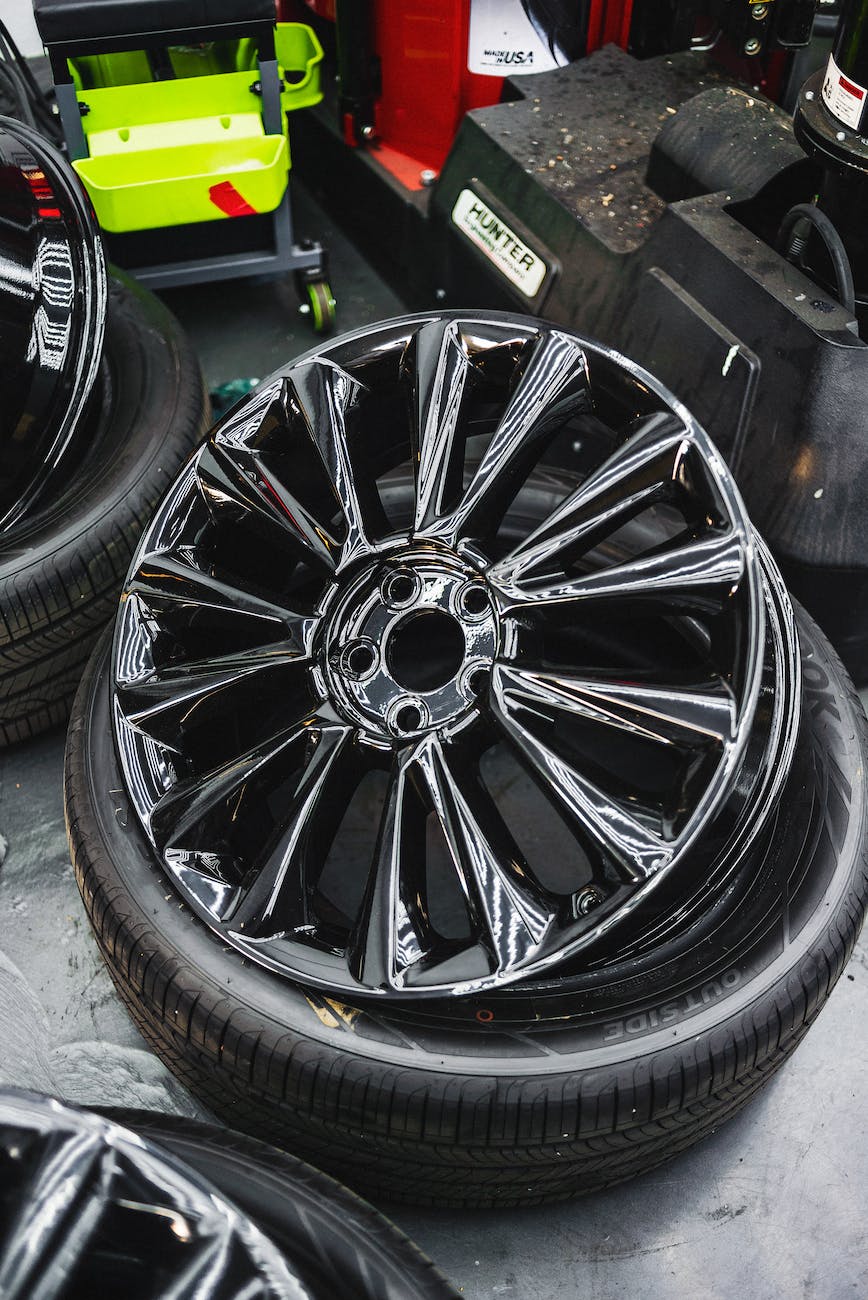
1. Tire Diameter and Rim Diameter
Tire size is typically represented by the diameter of the tire, such as 16 inches. On the other hand, rim size refers to the diameter of the wheel onto which the tire is mounted, like 17 inches. Matching tire and rim sizes is crucial for proper fitment and functionality.
2. Why Size Matters
Correctly sized tires and rims play a vital role in your vehicle’s overall performance. Here’s why:
3. Performance
The size of your tires and rims can impact acceleration, braking, and handling. Properly matched sizes ensure optimal grip, stability, and maneuverability on the road.
4. Speedometer Accuracy
Tire size affects the accuracy of your vehicle’s speedometer. Mismatched sizes can lead to incorrect speed readings, which may result in legal issues and safety concerns.
5. Safety
Maintaining the manufacturer-recommended tire and rim sizes is crucial for your safety and the safety of others on the road. Mismatched sizes can affect braking performance and stability, compromising your ability to control the vehicle.

Tire and Rim Compatibility
Now that we understand the importance of tire and rim sizes, let’s delve into the topic of tire and rim compatibility. It’s crucial to use tires and rims with matching sizes to avoid potential issues. Here’s what you need to know:
1. Mismatched Sizes
Installing 16-inch tires on 17-inch rims creates a mismatched combination. This can lead to several problems, including:
- Improper Fitment: The tire may not seat correctly on the rim, compromising the integrity of the tire and potentially causing air leakage or tire failure.
- Handling and Stability Issues: Mismatched tire and rim sizes can affect your vehicle’s handling, resulting in decreased stability, reduced traction, and compromised cornering ability.
- Braking Performance: Incompatible sizes can negatively impact your vehicle’s braking performance, increasing stopping distances and compromising overall safety.
2. Speedometer and Odometer Accuracy
Using mismatched tire and rim sizes can affect the accuracy of your speedometer and odometer readings. Larger or smaller tires can cause deviations in speed and mileage calculations, leading to inaccurate readings and potential legal issues.
3. Manufacturer Guidelines
It’s essential to follow the manufacturer’s guidelines regarding tire and rim sizes. Your vehicle’s owner’s manual or the manufacturer’s specifications will provide the recommended tire and rim sizes for optimal performance, safety, and warranty compliance.
In conclusion, it is not advisable to put 16-inch tires on 17-inch rims due to the potential issues that arise from mismatched sizes.
Upgrading from 16-Inch Tires to 17-Inch Rims and Downsizing from 17-Inch Tires to 16-Inch Rims
While it is generally not recommended to put 16-inch tires on 17-inch rims, there may be instances where you consider upgrading your tires and rims or even downsizing for specific reasons. Let’s explore both scenarios:
Upgrading from 16-Inch Tires to 17-Inch Rims
If you’re considering upgrading to 17-inch rims, here are a few things to keep in mind:
- Fitment and Modifications: Upgrading to larger rims requires careful consideration of fitment. Ensure that the new rims have the correct bolt pattern, offset, and hub diameter for your vehicle. Additionally, you may need to make adjustments to the suspension, fender clearance, and speedometer calibration.
- Tire Selection: When upgrading to 17-inch rims, you’ll need to select tires that are compatible with the new rim size. Consult the manufacturer’s guidelines or a tire professional to ensure you choose the appropriate tire size and type for your vehicle.
- Benefits: Upgrading to larger rims can enhance your vehicle’s aesthetics and potentially improve handling characteristics. However, it’s crucial to strike a balance between style and performance, considering factors like ride comfort and potential impacts on fuel efficiency.
Downsizing from 17-Inch Tires to 16-Inch Rims
In some cases, you might consider downsizing from 17-inch tires to 16-inch rims. Here are a few points to consider:
- Fitment and Modifications: Downsizing requires ensuring that the 16-inch rims are compatible with your vehicle, including matching bolt pattern, offset, and hub diameter. Suspension and brake clearances should also be considered.
- Tire Selection: When downsizing, you’ll need to select tires appropriate for the 16-inch rim size. Choosing tires with the correct diameter and width is essential to maintain overall tire circumference and avoid affecting speedometer accuracy.
- Trade-Offs: Downsizing to smaller rims can improve ride comfort and offer more affordable tire options. However, it’s important to note that downsizing may compromise some performance aspects, such as handling and cornering abilities, compared to larger rim sizes.
Frequently Asked Questions
Can I put 16-inch tires on 17-inch rims?
No, it is not recommended to put 16-inch tires on 17-inch rims. Mismatched tire and rim sizes can lead to fitment issues, compromised handling, braking performance, and speedometer accuracy problems.
What are the potential issues of mismatched tire and rim sizes?
Using mismatched sizes can result in improper fitment, handling and stability issues, compromised braking performance, and inaccurate speedometer readings.
Can I upgrade from 16-inch tires to 17-inch rims?
Yes, upgrading to larger rims is possible, but it requires careful consideration of fitment, modifications, and tire selection. Consult with a professional to ensure compatibility and make necessary adjustments for optimal performance.
What should I consider when downsizing from 17-inch tires to 16-inch rims?
Downsizing to smaller rims can impact performance aspects such as handling and cornering. Consider fitment, modifications, and tire selection to maintain compatibility and strike a balance between ride comfort and performance.
How can I ensure tire and rim compatibility?
Consult your vehicle’s owner’s manual or manufacturer’s specifications for recommended tire and rim sizes. Additionally, seek advice from a trusted tire professional or mechanic to ensure proper fitment and compatibility.
Can I mix tire sizes on my vehicle?
It is generally recommended to use matching tire sizes on all four wheels of your vehicle for optimal performance and safety. Mixing tire sizes can result in uneven handling characteristics and potential safety issues.
Wrapping it up
Understanding tire and rim compatibility is essential for maintaining optimal performance and safety in your vehicle. While it is not recommended to put 16-inch tires on 17-inch rims due to the potential issues that arise from mismatched sizes, there are instances where tire and rim upgrades or downsizing may be considered.
As we’ve explored throughout this comprehensive guide, tire and rim sizes play a crucial role in performance, handling, braking, and speedometer accuracy. It is imperative to follow the manufacturer’s guidelines and consult with professionals to ensure proper fitment and compatibility.
Maintaining the right tire and rim sizes for your vehicle not only ensures optimal performance but also promotes your safety and the safety of others on the road.
Whether considering an upgrade or downsizing, make informed decisions and seek professional guidance to find the balance between style, performance, and safety.






